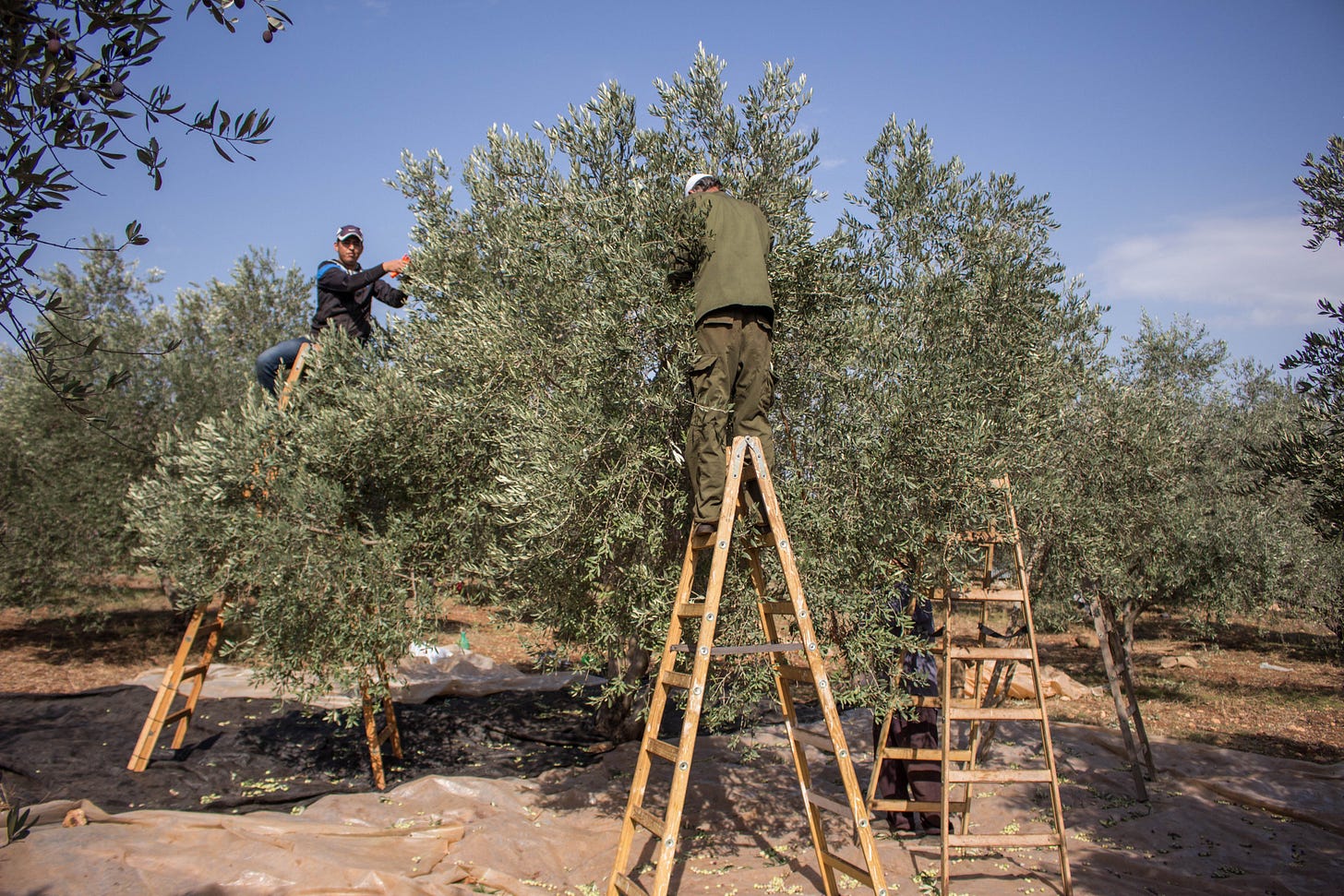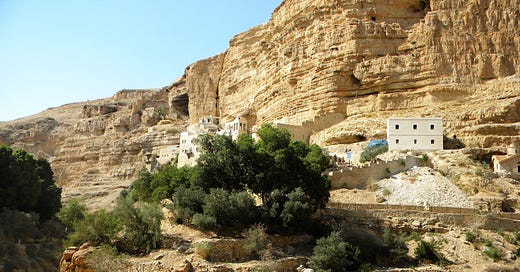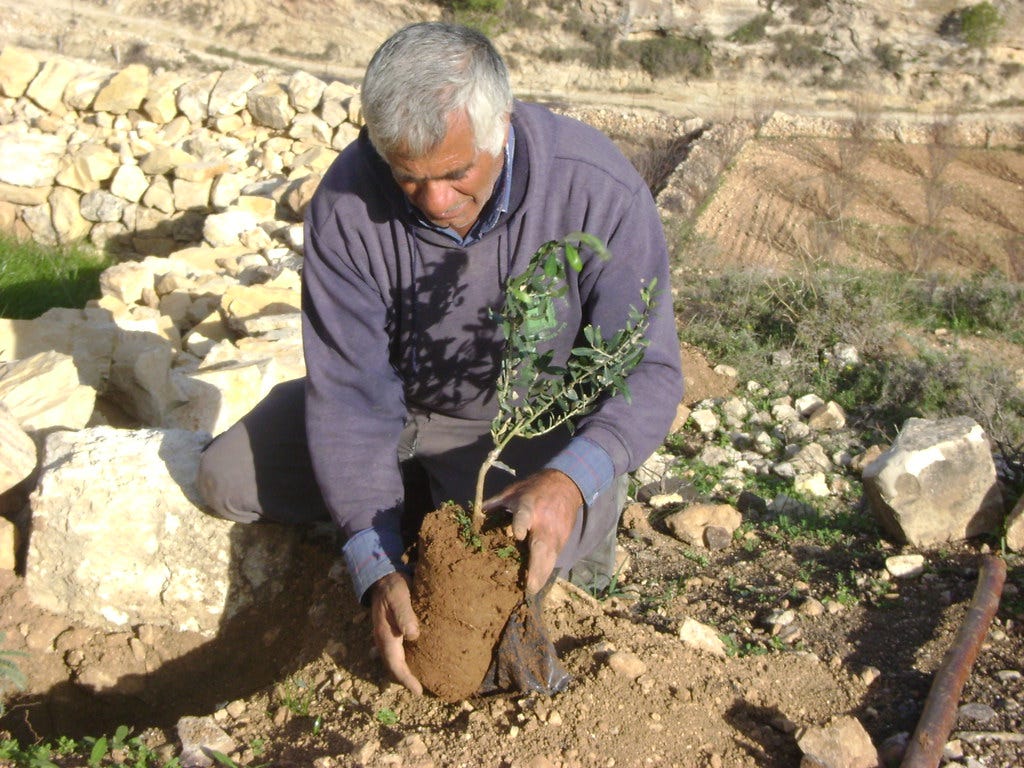the ecology of palestine
The ecology of a place is the set of relationships between living organisms and their environment. They are inextricably linked.
The features of the environment inform the actions of the organisms and the actions of the organisms affect the environment. This is true in every ecosystem and it’s true in Palestine.
Palestine is located in the Middle East, the portion of land connecting Africa to Eurasia, where the first human agriculture developed and where there is a wealth of cultural and ecological history.
It is a varied place, with several distinct ecosystem types including coastal plains, highlands, semi-arid steppes, and the semi-tropical Jordan Valley. This allows for greater-than-average biodiversity. Palestine has 3007 native species of plants, 7% of which are found only within the historic boundaries of the nation.
It is also home to many native species of animals, and acts as a resting place for millions of migratory birds as they travel between Europe and Africa.
This rich environment has brought about a long-lasting history of farming and foraging. Olives are one of the most prevalent crops in Palestine, and people still regularly supplement their diet with foraged wild thyme (za’atar), dandelion, asparagus, and sage.

Palestine is also at significant risk from climate change, as many biodiverse places are. Despite contributing far less greenhouse gas emissions than Western nations, it faces disproportionate climate change threatsincluding desertification and biodiversity loss.
Of course, this is not happening in a vacuum. As I mentioned, the living organisms in an environment will affect their habitat, humans included. And humans have had a profound effect on the ecology of Palestine.
Palestine has been in conflict with Israel since 1947 when the UN adopted a resolution that divided the British Mandate of Palestine into Arab Palestine and Jewish Israel.
The resolution sparked the 1948 Arab-Israeli War and the resultant displacement and dispossession of 750,000 Palestinian people, an event known as the Nakba, or “catastrophe” in Arabic.
The formerly multi-cultural society of Palestine was divided into the state of Israel, the West Bank, and the Gaza Strip.
This two-state solution has sparked tension and violence for the past 80 years, including wars between Israel and adjacent Arab countries, political instability in Palestinian territories, and uprisings in the West Bank and the Gaza Strip.
Most recently, Hamas, the military movement that governs the Gaza Strip, attacked Israel on October 7th, 2023. Almost 1,200 people were killed and Israel subsequently declared war on Hamas.
Israel’s retaliation has been bloody and destructive. Almost 38,000 Palestinians have been killed, about half of whom are women and children. These figures do not include those still missing or trapped under rubble.
An additional 78,500 people have been wounded, many of them requiring amputations, and over 1 million people have been displaced from their homes.
The human cost is staggering and horrifying. Each statistic represents a person, a human being, whose life was cut short in the name of war.
This is also a war on the environment, as most wars are.
The carbon dioxide emitted from Israel’s aerial bombardments and ground invasions is estimated to be more than 281,000 tons, higher than the annual carbon footprint of some entire nations.
Toxic dust, ash, and debris fill the streets and the air of Palestine, increasing the risk of respiratory disease.
All of Gaza’s wastewater treatment plants lost power within the first few weeks of the war, allowing sewage to flow into the Mediterranean Sea, increasing instances of illness and presenting an environmental threat to Israel and Palestine alike.
43% of cropland in Gaza has been damaged and the soil rendered toxic and infertile for future agricultural endeavors.
These are immediate products of this year’s war, but environmental impacts from political tension between Israel and Palestine are, unfortunately, not new.
Israel controls virtually all of the water in Palestine. The main resources, the Coastal Aquifer and the Mountain Aquifer, are located in Gaza and the West Bank respectively. But per the 1993 Oslo Accords, 80% of that water is allocated for Israeli use.
Despite consistent population growth in Gaza and the West Bank over the past 30 years, Palestine is still only allotted 20% of the aquifer water and Israel has set a hard limit on Palestinian water usage.
Land partitioning by Israel has also extensively affected the ecology of the region. Expansion of Israeli settlements and the construction of walls and fences have led to the removal of native species and fragmentation of existing habitats.
Palestinians are also repeatedly kept from practicing traditional agriculture. In 2020 alone, Israeli soldiers uprooted or burned more than 8,400 olive trees, a source of economic and cultural importance to the Palestinian people.
And since 1977, picking za’atar and sage has been a criminal offense. Ostensibly this is to prevent overconsumption, but foraging practices have been part of the Palestinian tradition for generations.
It seems evident to me that the ecology of Palestine is an ecology under attack.
And when women and children are being exterminated, the land is being fragmented and torn apart, cultural traditions are rendered criminal, and water is being deliberately withheld, that aligns with the definition of a genocide – the deliberate killing of people who belong to a particular racial, political, or cultural group.
There is a lot of political tension and complexity surrounding the war between Israel and Hamas – if you can even call it that. As time goes on, it appears much more like an attack on land and people than an even, two-sided war.
But some things shouldn’t be political. And some things aren’t complex.
Prioritization and protection of our environment is necessary; it serves all of us. Yet it is hotly debated in political theaters around the world.
The murder of tens of thousands of civilians is despicable. But it is excused because the situation is “complicated” and violence is simply a part of war.
I know not everyone shares the same perspective on the situation in Palestine, and I am not trying to convince people to reframe their worldview with one short essay. But I do hope that we can all see these tragedies for what they are: loss of land, loss of biodiversity, loss of life.
I think it’s important that we learn about Palestine, see it as a tangible place, an ecosystem, a homeland, and not just fodder for global political discourse. It’s important that we understand the ways this ecosystem has defined and supported the people who call it home, and the ways that human conflict has caused enduring harm on its ecology.
As for me, I will always find the destruction of invaluable ecosystems heartbreaking and the killing of innocent people deplorable. I want to do what I can to ease the burden on these people and this place. I hope this is a good start.
Resources to learn about and help Palestine:
Collection of resources from the US Campaign for Palestinian Rights: https://uscpr.org/resources/
Email Congress to demand a ceasefire: https://act.uscpr.org/a/stop-genocide
Collection of resources from Asian American Advocacy Fund: https://asianamericanadvocacyfund.org/resources-for-palestine
Palestine Children’s Relief Fund: https://www.pcrf.net
Operation Olive Branch (grassroots initiative to provide aid for Palestinian families): https://linktr.ee/opolivebranch
United Nations Relief and Works Agency (UNRWA) for Palestine refugees: https://www.unrwa.org/unrwa-fund
Helping Hand for Relief and Development Palestine Emergency Fund: https://www1.hhrd.org/Campaigns/Palestine-Relief




